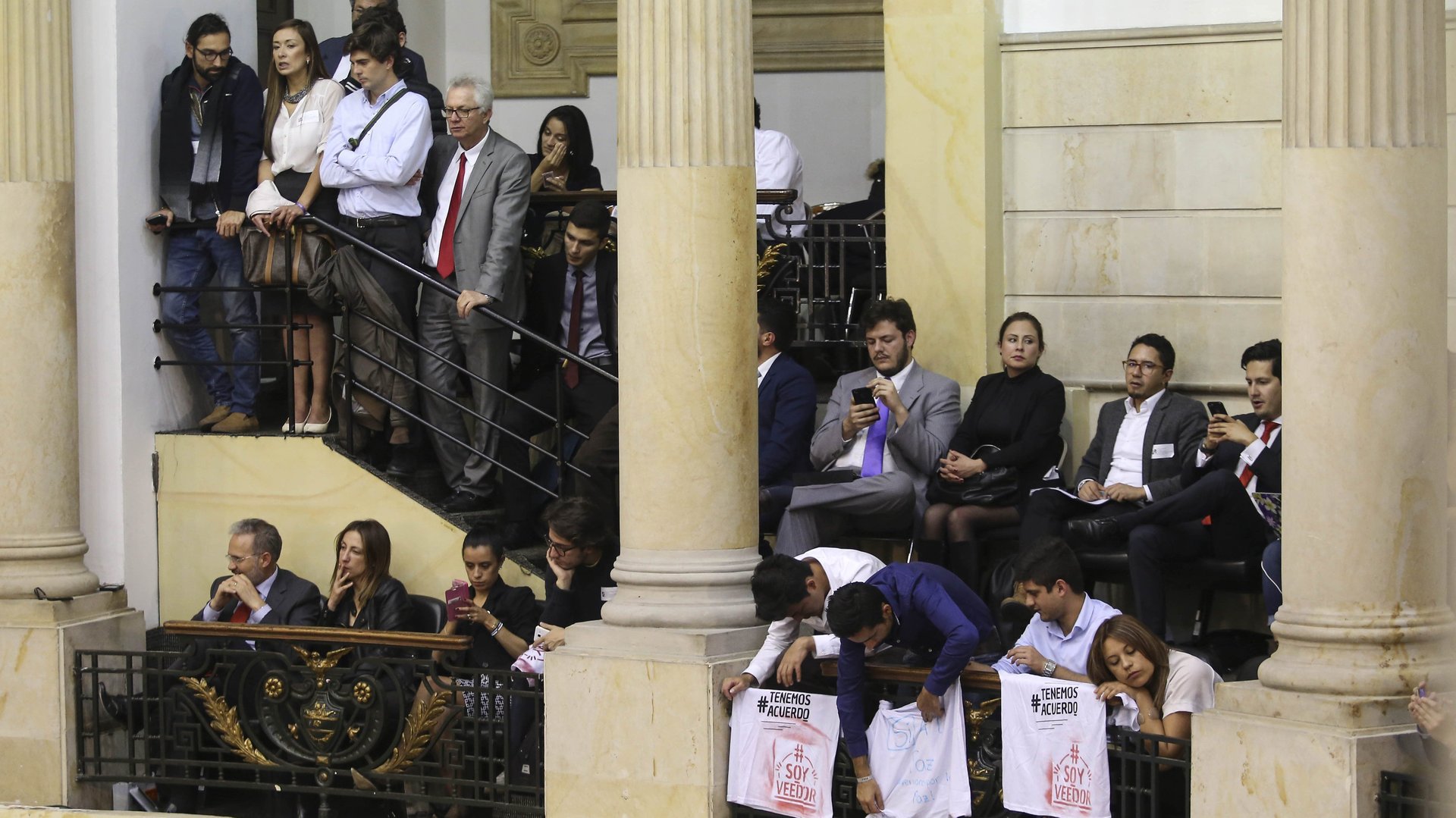After a spectacular public stumble, Colombia quietly finalizes its peace agreement
Peace is a done deal in Colombia. After four years of negotiations, premature peace parties and ceremonies, and a failed plebiscite, the Colombian congress has finally ratified the peace agreement hammered out by president Juan Manuel Santos’s government and the FARC guerrilla.


Peace is a done deal in Colombia. After four years of negotiations, premature peace parties and ceremonies, and a failed plebiscite, the Colombian congress has finally ratified the peace agreement hammered out by president Juan Manuel Santos’s government and the FARC guerrilla.
The vote to approve the accord, which ends more than 50 years of civil war, was unanimous (link in Spanish) in both the house of representatives, on Nov. 30, and the senate, a day earlier. (Congress members who opposed the deal abstained.)
The approved deal is a revision of the original draft that was rejected by Colombian voters in an Oct. 2 plebiscite. Colombian law did not require that the peace deal be put to public vote, but president Santos had insisted on it to bolster its legitimacy.
Polls ahead of the plebiscite showed a clear win for the “yes” side. The FARC celebrated their last days in the jungle. Guerrilla leaders and Santos symbolically signed peace before world dignitaries in a tearful ceremony (Spanish.) A few days later, the “no” side surprisingly won by the narrowest of margins.
That set Santos off on a flurry of negotiations to address the “no” side’s objections. After incorporating some of their suggestions into a new version of the deal, he argued that congressional representation was enough to ratify it the second go-around.
Now comes the hard work of implementing the 310-page document (Spanish, pdf.) The first order of business: the demobilization and disarmament (Spanish) of the FARC. The guerrilla, which has around 6,000 members, will assemble in designated areas around the country, where they will relinquish their weapons to the United Nations within 180 days (both links in Spanish.)